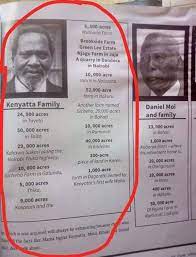LATEST HOT NEWS IN THE ROOM
Kikuyu Clans and their Attributes
- Get link
- X
- Other Apps
Kikuyu elders at a Beer Festival (Tuthu Village,Muranga in 1908)
According to Kikuyu tales, God, Ngai, created the first man Gikuyu and placed him at a place near Mount Kenya at a place called Mukurwe wa Gathaga in present day Muranga County. He was lonely and he asked Ngai for a partner. Ngai gave him a woman called Mumbi and together they got 9 daughters. The clans of the Kikuyu are named after these daughters:
- Wanjirũ is the mother to the Anjiru clan
- Wanjiku is the mother to the Anjiku clan
- Wambũi is the mother to the Ambui clan
- Wangũi or Waithiegeni is the mother of the Angui or Aithiegeni clan
- Waithĩra or Wangeci is the mother to the Aithĩrandũ or Angeci clans
- Waceera or Wanjeri is the mother of the Aceera clan
- Nyambura or Akĩũrũ or Ethaga is the mother of the Ethaga clan
- Wairimũ or Gathiigia is the mother to the Airimu or Agathigia clan
- Wangarĩ or mũithekahuno is the mother of the Angari clan also known as Aithekahuno
- Wamũyũ or Warigia was the last born to Gikuyu and Mumbi and is the mother to the Aicakamuyu,Warigia,Wanjugu clan
As you notice the clans are ten and not nine as per the number of daughters. This has been one controversial discussion among historians. Many historians attest to a 10th daughter (Wamuyu). Wamuyu, remained unmarried but nevertheless as a single mother became the mother of the Aicakamuyu clan. The common reason given for this omission is because the Kikuyu believe saying plainly there are 10 clans/daughters would bring bad omen to the community. According to Father Cagnolo of the Consolata Fathers in his 1933 book,”Akikuyu” he says the term used to refer to Mihiriga/clans was,”Mihiriga ni Kenda eihoire” meaning, “the clans are nine in full”. Stanley Kiama Gathigira in his “Gikuyu” book
Ni wega kumenyuo ati ruriri rwa Gikuyu ruri mihiriga kenda uiyuire – kenda uiyuire ni ikumi uhoroini wa kugera andu tondu Agikuyu matigeraga muigana wa andu, matigathire”– “It is good to note that the Gikuyu tribe has nine full clans – nine full is ten in the manner of counting people as the Agikuyu do not number people in case they perish
Gakaara wa Wanjau writes in his book Mihiriga ya Agikuyu, (1967)
Ona gutuika Agikuyu moigaga ati mihiriga yao ni kenda, ni kuri hitho yuikaine wega ati mihiriga yothe ni ikumi. Agikuyu ni matuuraga mari na mugiro wa kugera andu kana mahiu imwe nginya ikumi, na tondu ucio matigitikagira gutengura ati mihiriga yao ni ikumi tondu ni mehokete ati gwika uguo ni gutuma andu ao mathire. Handu ha kugweta ikumi magwetaga “kenda muiyuru.” – Even if the Kikuyu say that their clans are nine, there is a well-known secret that the clans are ten. The Kikuyu have lived with the taboo of counting people or domestic animals one to ten, and because of this they do not agree to state that their clans are ten because they believe that doing this will bring their demise. Instead of stating ten they say “nine full
Fred K Kago (1954) also states,
“Mihiriga ya Gikuyu ni kenda, kenda muiyuru” “The Gikuyu clans are nine, nine in full”
Another common feature is some clans have multiple names which is majorly due to geographical locations. There are two main groups; the Northern Gikuyu which is made up of Nyeri and Kirinyaga while the Southern Gikuyu include the Muranga and Kiambu.
A superficial look, one may think that the clans add up to 50-60 but that is wrong because each clan could have up to 5 different names. Below is a good example from a book written by Routledge in the early 1900s.
Routledge’s List of clans
1. Anjirũ
2. Ambũi
3. Achera
4. Agachiku
5. Ethaga
6. Airimu
7. Aizerandu
8. Angari – Aithe Kahuno
9. Angui
10. Akiuru – Mwesaga – Mburu
11. Aichakamuyu
12. Agathigia
13. Aiziegeni
It is clear that Routledge mixed up the clans by not taking into consideration that some had more than one name. For example, Aitheigeni and Angoi are one clan.
The clans of the Kikuyu had different attributes and performed different roles to the collective harmony of the whole tribe,Nyumba ya Mumbi
Anjiru: Wira wao ni wa kuhingira thu cia ruriri, magongona ma
kurathima mbutu cia mbara
They are the defenders and offer sacrifices for warriors before war
Ambui: Kuiyira na guthiganira ruriri hitho cia thu na Kwenda
unene kana utongoria
They are the spies in the land and always seek leadership
Agaciku: Atahiri a ruriri, Nimendete muno gukiana
They are very good brokers and negotiators
Aceera: Aciririri a ruriri, gutugania na kanua na ciugo njega no
kuheana kindu ni hinya
They are good lawyers and have a very sweet tongue. However, they are very mean
Airimu kana Agathigia: Kuhingira thu na ihooto rurini-ini
They are defenders of the land
Ambura kana Ethaga/Akiuru: Kurumanira thu cia ruriri aingi ni arigitani na mari
mithaiga na urogi
They are doctors but are also thought to be witchdoctors
Angari kana Aithekahuno: Ni agwimi a ruriri , ni hinga.
They are investigators in the community (CID)
Angui kana Aithiegeni: Aigwithania agutwara uhoro kiama-ini.
They are messengers in the land
Angeci kana Aithera andu: Thigari cia ruriri.
They are the warriors who protect the land
Aica Kamuyu: Athii na gutega na aingi ao makoragwo mari
arogi.
They are witches
Conclusion
The clans are all equal and none is greater or more privileged that the other. The Mihiriga seem to have played different roles all towards one social network. Gakaara wa Wanjau in his book in 1967, he gives different attributes that were given to each clan and it seems more of the role each played in the Agikuyu nation.
Inter-marriage between the different clans was allowed although in exception cases head of a family did prohibit intermarriage especially in cases where they had been mistreated under the said clan.
Hospitality was very high between and within the clans. Father Cagnolo says “no Kikuyu starting a journey would think of what they have to eat on the way. If a member of the clan suffered a grave abuse the whole clan would solidly join to get justice.
- Get link
- X
- Other Apps
TOTAL PAGEVIEWS
YOU CAN ALSO SEE MORE IN OUR POSTS
Generational shifts
Uhuru secret team to fix succession by 2022
Is the mission Impossible Implementing the Ndung’u Report in kenya?
Uhuru clueless about PS reshuffle list?
How Idi Amin took Uganda to the brink of war in 1976 after attempts to annex parts of Kenya Territory
Komodo Dragon
Victor Wanyama Foundation scholarship beneficiaries undergo mentorship
Time has come that I must speak the truth
Rachael Ruto commercializes her hobby so as to help women
SOCIAL AND EQUALITY TO ALL

My main agenda is adopting a Gramscian theoretical framework, the five parts of this volume focus on the various ways in which the political is discursively and materially realized in its dialogic co-constructions within the media, the economy, culture and identity, affect, and education. We focus at examining the power instantiations of sociolinguistic and semiotic practices in society from a variety of critical perspectives, this blog focus at how applied political linguists globally is responding to, and challenge, current discourses of issues such as militarism, nationalism, Islamophobia, sexism, racism and the free market, and suggests future directions. No peace, no unity, no coexistence hence all becomes vanity...! It's why the world is oval.








